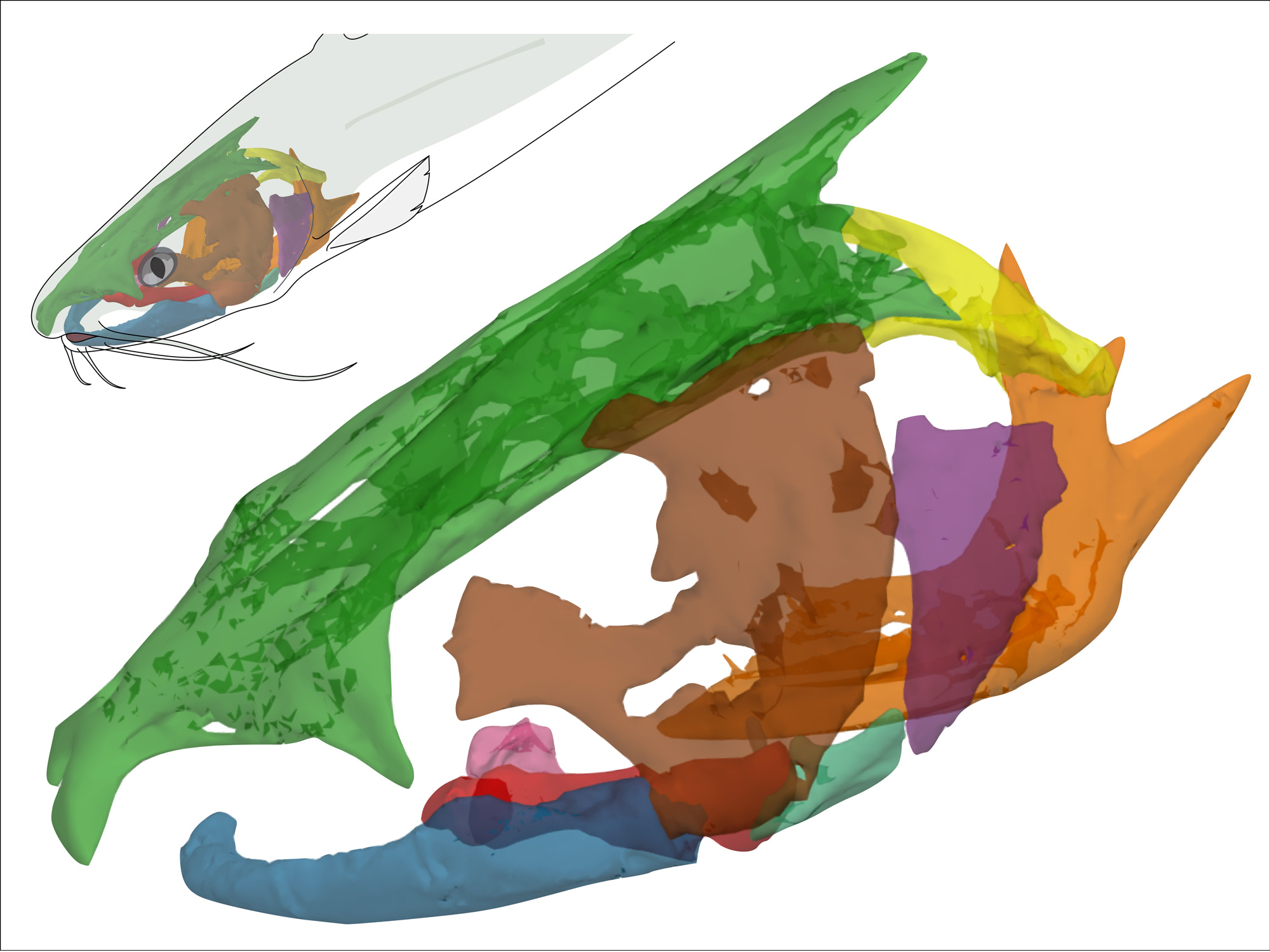
PROVIDENCE, R.I.[Brown University] — Catfish do not have arms or tongues to help them catch and swallow their prey — instead, a catfish ready to strike moves its head.
Using a powerful X-ray-based technology, Brown University scientists tracked catfish as they caught and swallowed prey to develop a precise understanding of the complex set of motions required to create the suction necessary to eat. They found that many of the bones in the catfish skull work in a coordinated manner to catch food. However, the bones move more independently when the fish swallow.
“Fish have the most mobile skulls of vertebrates,” said Aaron Olsen, a postdoctoral research associate in Brown’s Department of Ecology and Evolutionary Biology. “Fish have over a dozen moving pieces in their skull, and they’re all connected together by joints and ligaments in these closed loops called ‘linkages’ in engineering. In comparison, humans have moving lower jaws and middle ear bones, but that’s it. The heads of fishes also have very diverse shapes, so we can study how these complex systems evolved in lots of different linages of fishes.”
The findings were published on Wednesday, April 17, in the journal Proceedings of the Royal Society B.
To make the observations, Olsen and his colleagues used a 3D-imaging technology called X-ray Reconstruction of Moving Morphology (XROMM), which was developed at Brown. The technology combines CT scans of a skeleton with high-speed X-ray video, aided by tiny implanted metal markers, to create visualizations of how bones and muscles move inside humans and animals. The technique is so precise that scientists can track movements with errors equivalent to only the width of a human hair.
“XROMM basically gives us X-ray vision to watch how multiple bones move within an animal as they perform a behavior,” Olsen said.